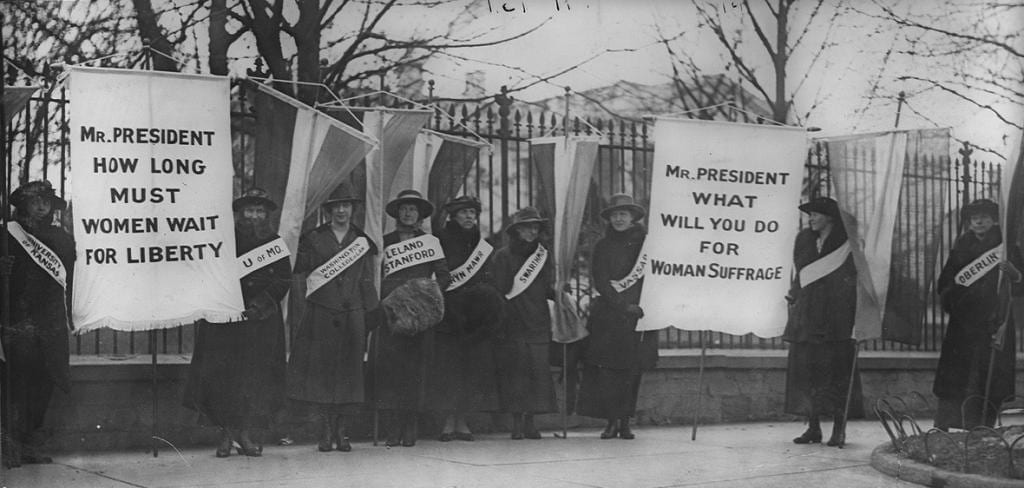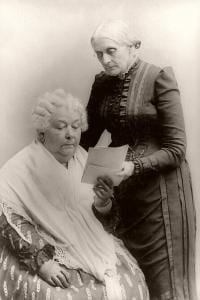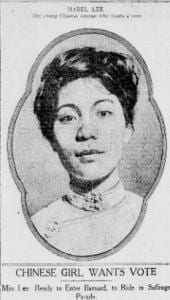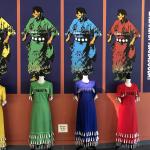Suffragists fascinate me. I have always been impressed by their steadfast commitment to political equality for women during an era—the nineteenth and early twentieth centuries—that was not often receptive to their message. Specifically, I have wondered what drove such a commitment. Many of my students at Baylor come from religious backgrounds, so when I began teaching American women’s history here, I wanted to find out more about suffragists’ religious convictions. Could I connect their stories to my students’ lives? Did religious beliefs motivate suffrage activism in any way? Eight years later, I am still mulling over what I found.
In a nutshell, religion intersected with the fight for woman suffrage in unpredictable ways. Religious beliefs of the major players are all over the map. Some suffragists were motivated by their faith, while others lost or altered their faith over its resistance to suffrage. These facts raise the question for me of the relationship between religion and politics—a question American religious historians have been debating with increasing vigor since the election of Donald Trump. (See here and here for recent examples.)

To help us think through this question, consider a few of the stories of some of the more famous American suffragists (and a few who should be more well known!):
The most clear-cut case is Quakers (the Society of Friends). Quakers were overrepresented in the suffrage movement—think Sarah and Angelina Grimke, Lucretia Mott, and Susan B. Anthony—and historians tend to agree that their distinctive theology was a root cause. Unique among Protestants, Quakers asserted the existence of an “inward light,” a pointer God placed within all people to lead them to spiritual truth if they chose to listen. Some Quakers believed the inward light would always confirm the words of Scripture and others believed it could lead beyond them, but all believed both women and men possessed it. Quakers did not have formal pastors but rather “ministers” who were recognized by the community as hearing the inward light particularly well. (Quaker meetings consisted of everyone sitting in silence until someone was moved by the light to speak.) Women were recognized as ministers on par with men and often commissioned by their local Quaker meetings to serve as traveling preachers. Experience with this unusual level of gender equality led many Quaker women to take the lead in mid-century feminist activism. Famously, Quaker Lucretia Mott partnered with Elizabeth Cady Stanton, raised Presbyterian, to hold the 1848 Seneca Falls Convention for women’s rights. Stanton in turn would later partner with Quaker Susan B. Anthony.

Most suffragists were abolitionists too, and the suffrage coalition split after the Civil War as a result of disagreement on whether to back the fourteenth and fifteenth amendments to the US Constitution that granted black men citizenship and the right to vote without extending the vote to women too. People of faith ended up on both sides of the split. The American Woman Suffrage Association (AWSA), led by Lucy Stone and Frederick Douglass, advocated endorsing the black vote first and then seeking to persuade each state to later add women’s suffrage too. Stone shifted from evangelical Congregationalism to Unitarianism over the course of her life, whereas Douglass was a licensed preacher in the African Methodist Episcopal Zion Church.
Meanwhile, the National Woman Suffrage Association (NWSA), led by Elizabeth Cady Stanton and Susan B. Anthony, advocated not supporting suffrage amendments that did not include women alongside African Americans. After the fifteenth amendment passed in 1870, they fought for a further amendment to the Constitution guaranteeing women’s right to vote, rather than trying to change each state’s laws. Stanton, raised Presbyterian, later became a freethinker because of the opposition to suffrage she encountered from many mainstream Protestant ministers. Meanwhile, Anthony, raised Quaker, later became Unitarian like Stone and ultimately agnostic. Yet the single most effective suffrage organizer of the later nineteenth century was a pious Methodist: Frances Willard, president (1879–1898) of the Women’s Christian Temperance Union (WCTU). In addition to temperance advocacy, Willard encouraged WCTU members to “Do Everything,” which prominently included advocating for woman’s suffrage so their moral voice would have a role in government.

In the late nineteenth century, the AWSA and the NWSA combined into NAWSA (National American Woman’s Suffrage Association), the organization that would spearhead the fight for suffrage in the twentieth century until the nineteenth amendment granting suffrage to all American women passed in 1920. NAWSA was for most of its existence led by one of the first ordained female Methodist ministers—Anna Howard Shaw—and a freethinker, Carrie Chapman Catt. Its more radical spinoff, the National Woman’s Party (1916), was co-led by a Quaker, Alice Paul, and a Catholic, Lucy Burns. Many of these organizations marginalized women of color, but these advocates for suffrage also ran the religious gamut. Anti-lynching and suffrage advocate Ida B. Wells-Barnett taught a men’s Bible class at a Presbyterian church. And historian Cathleen Cahill introduced me to the story of Chinese-American suffragist Mabel Ping-Hua Lee: When Lee’s father passed away, she took over his position as Director (functionally, minister) of First Chinese Baptist Church of New York City. Meanwhile, suffragist Lillian Wald, a nurse and settlement house founder, was Jewish.
So what do we make of all this? If suffragists and anti-suffragists both often appealed to the Bible to justify their respective positions, was their faith really what was determining their political stance? Or since many different faith communities appealed to the Bible perhaps it was a matter of which one you belonged to? But most Catholics did not side with Lucy Burns. At the same time, we cannot throw out the significance of specific theological traditions entirely: Quaker theology made a clear statistical difference. Elizabeth Cady Stanton concluded that the fundamentals of Protestant faith were wrong because so many Protestant ministers opposed suffrage. By contrast, Frances Willard believed Christian faith required suffrage advocacy and concluded instead that those ministers did not properly understand the implications of their faith. Did underlying beliefs or just personality determine this difference?
I haven’t written directly on the contemporary debates over the extent to which evangelical theology, ecclesiology, or style inherently predisposes adherents to adopt certain political positions—because I am still thinking it out! But I appreciate fellow Anxious Bench blogger Chris Gehrz’s challenge to us to “think in public.” So I invite you to think alongside me. Let’s let suffragists inspire us to reflect on what has been—and what should be—the connection between religious beliefs and politics.













